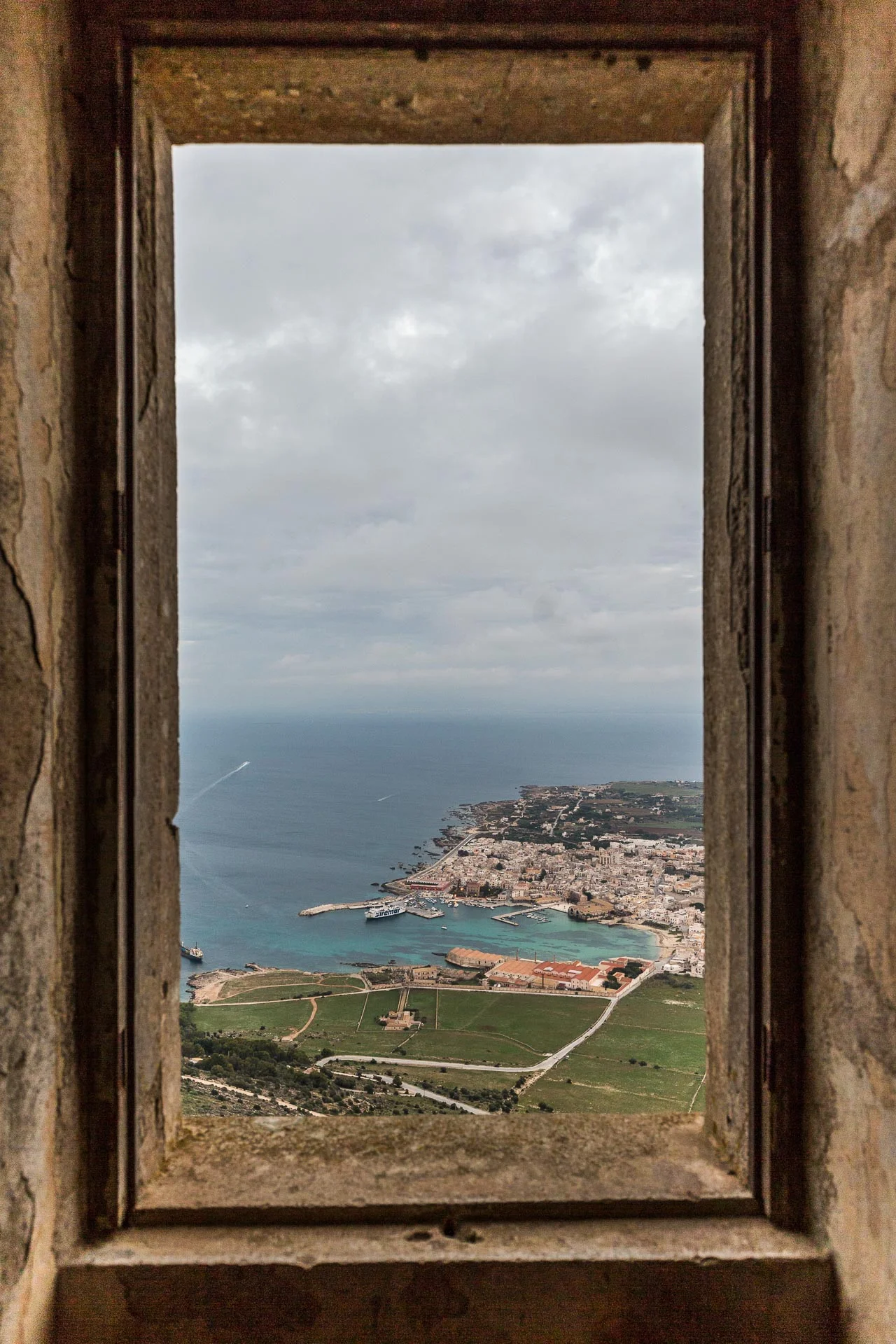Solitude has always been highly fascinating for human beings. Hermitages, fortresses, shelters. Since the dawn of time, human beings have been looking for a solitary condition, avoiding their counterparts as if they wanted to rediscover a feeling of purity, reconciliation with their self and union with nature.
The fortress of Santa Caterina stands over the peak of Favignana, an isle set at the heart of the Mediterranean Sea. It appears as a real jewel of solitude. It is a place imbued with an imposing and moving beauty. In such place, the embrace of nature is so intimate that creates the sweet and yearned for oblivion that fills the heart of those who had the bravery to leave civilization to listen to silence.
For more than a century, the fortress has been an abandoned prison. From the peak of the promontory, it solitary witnesses the continuous rise and setting of the sun in the crystal waters of the Mediterranean Sea. The latter has always been vigilant on the events of the isle. Over time, the industrious fishermen village has become a booming destination for international tourism.
How to transform an ancient prison into a treasure chest containing works of art and the creative action of internationally renowned artists and intellectuals? How to transform an ancient fishermen isle into an open-air contemporary art museum?
Art, in general, is produced to be seen or experienced by another, an interlocutor, who, in turn, establishes various relationships with the work.
The remote location of this project makes it difficult to access by car and makes the journey a task that takes on the air of pilgrimage, part of its grace lies precisely in its inaccessibility. The ‘Panoromic Wall’ proposes to highlight the extraordinary views and landscape surrounding the site, whilst combining functions of both public and private spaces. The building will be built in exposed travertine tiles and rusted iron columns with strong geometry. A glass ribbon wraps around the building, which makes it a highlight against the natural backdrop.
We used computer programs such as: Revit, AutoCAD, Lumion, SketchUp, V-Ray, Photoshop and InDesign to establish our final presentation.



















